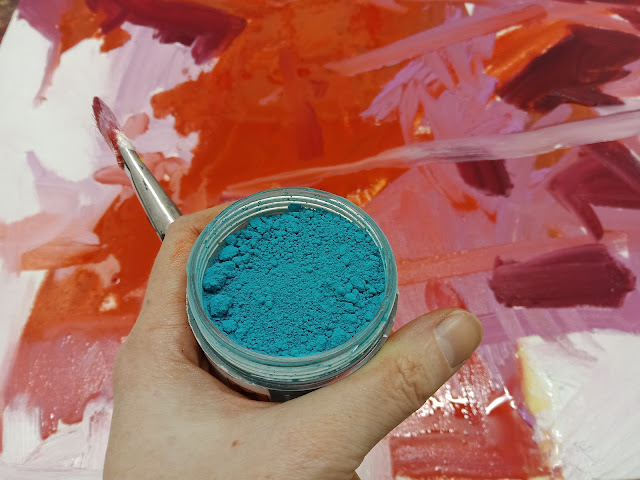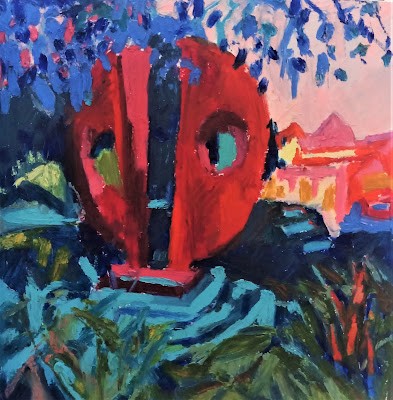 |
| 'The Water and The Wave', Gouache and ink on paper, 10 cm x 15 cm |
There was a time when Buddhas and Bodhisattvas were a vibrant
reality to many people. They were living presences, tangibly felt in the real
world, and existed beyond their immediate signs of images or icons.
Mountains too had vibrant power and immanence, and their energy and vitality could
be communicated through a representation that was directly accessed through the
heart, the eye and the hand.



‘The Pure Land’ in Buddhism is a realm that Buddhas
and Bodhisattvas preside over and are places where no grief, anguish or sorrow occurs. We are
free from suffering in the Pure Land. These places were designed to be highly
ornamented, as it gave their environment dignity, and when artists were creating a
vision of the pure land, it too was meant to be lavishly and suitably
ornamented. Ornamentation in this sense is desirable, a positive attribute that
is necessary in building an appropriate environment for gods and spirits. This
meaning stands at odds with the term ‘decorative’ in art, often adopted to
negatively deride an artwork as overtly superficial or having no formal qualities of usefulness.
 |
| 'The Water and The Wave', detail |
 |
| 'The Water and The Wave', detail |
Highly visually dense paintings were also associated
with a richness in mental fertility. Paintings could depict a certain state of
mind but could also be the conduit to allow us to enter a certain of mind too. Ancient Tibetan Thangka paintings offer us a world in full vivid technicolour, where the beauty of each form and colour seems painted with such purpose, free from doubt of whether a certain colour 'goes' with another or not. The power of each individual colour speaks fully for itself.
 |
| Green Tara, an Eastern Tibetan Thangka painting from the 18th Century |
 |
| Yama, god of death and the underworld, Tibetan Thangka painting from the 17th or 18th Century |
 |
| Experiments in layering and folding different coloured quick-drying foam |
Paintings seem to be able to transmit specific
feelings or states that are at once definite and yet indefinable. I see painting as a type of
pre-verbal language and a necessary conduit to connecting to a core spirit or
essence of being human. The physical act of painting, pushing, pulling,
diluting, pasting on, scraping off, dribbling, dripping, pouring, soaking and
staining pigments with a binder, and leaving these marks on a surface
that resonates to the maker, is a primordial and magical experience. Paintings can be both a method to present the power and
presence of a journey undergone physically, out in the landscape, as well as providing
a diary of the more personal journeys of creating and making in the studio.
This blogpost was informed by Raoul Birnbaum's essay "When is a 'Chinese Landscape Painting' also a 'Buddhist Landscape Painting'?" in the book 17th Century Chinese Paintings from the Tsao Family Collection.














Comments
Post a Comment